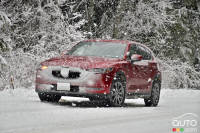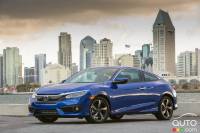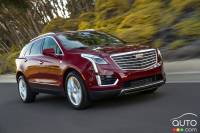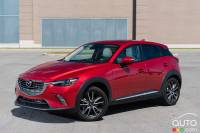I’m driving a 2012 Range Rover Evoque this week – the three-door model – and I still can’t get over how much it resembles the Land Rover LRX Concept that was unveiled at the 2008 Detroit Auto Show.
Changes to the crossover’s bodywork are barely noticeable. Most modifications have been applied to the lower portion of the bumpers and the rocker panels, and you must compare pictures of the Evoque and LRX side by side to notice the difference. There are also door handles on the production version, as well as real, useful rear view mirrors.
That’s about it.
That means showgoers, who expressed their desire to see the LRX reach production, were actually listened to by the folks at Land Rover. They didn’t soften the design, they didn’t cut corners to please their beancounters, and they didn’t chicken out of producing a vehicle that would represent a radical departure from what the brand usually sells. It might have taken a few years to see the light of day, but the resulting Evoque is bold, daring and provocative.
A concept vehicle that becomes reality without any major changes to the design doesn’t happen very often. We’ve been tantalized so many times with breathtaking concepts flaunting sexy, alluring and futuristic bodywork only to be told that it would never reach production. Or worse; when the vehicle gets green-lighted, besides a couple of styling cues that “hint” at the concept, it looks nothing like it.
Some concept-to-production disappointments include, off the top of my head, the 1997 Oldsmobile Alero Concept, the 1999 Dodge Charger Concept and the 2004 Mitsubishi Eclipse Concept.
Let’s hope BMW’s i8 Concept and Acura’s NSX Concept become reality as is, or without any major changes to their sleek, gorgeous shape.
Changes to the crossover’s bodywork are barely noticeable. Most modifications have been applied to the lower portion of the bumpers and the rocker panels, and you must compare pictures of the Evoque and LRX side by side to notice the difference. There are also door handles on the production version, as well as real, useful rear view mirrors.
That’s about it.
 |
| The three-door model of the 2012 Range Rover Evoque (left) and the Land Rover LRX Concept (right) are identical. (Photo: Land Rover) |
That means showgoers, who expressed their desire to see the LRX reach production, were actually listened to by the folks at Land Rover. They didn’t soften the design, they didn’t cut corners to please their beancounters, and they didn’t chicken out of producing a vehicle that would represent a radical departure from what the brand usually sells. It might have taken a few years to see the light of day, but the resulting Evoque is bold, daring and provocative.
A concept vehicle that becomes reality without any major changes to the design doesn’t happen very often. We’ve been tantalized so many times with breathtaking concepts flaunting sexy, alluring and futuristic bodywork only to be told that it would never reach production. Or worse; when the vehicle gets green-lighted, besides a couple of styling cues that “hint” at the concept, it looks nothing like it.
Some concept-to-production disappointments include, off the top of my head, the 1997 Oldsmobile Alero Concept, the 1999 Dodge Charger Concept and the 2004 Mitsubishi Eclipse Concept.
Let’s hope BMW’s i8 Concept and Acura’s NSX Concept become reality as is, or without any major changes to their sleek, gorgeous shape.






















